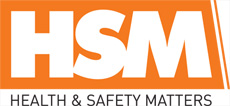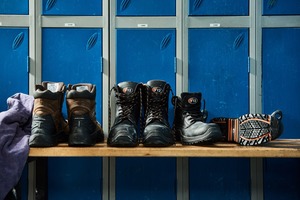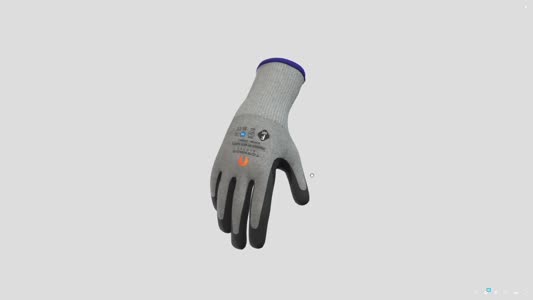
 |
Mark Sennett
Managing Editor |
 |
Kelly Rose
Editor |
| Home> | PPE | >Safety Footwear | >Prevent common foot hazards in the oil and gas industry |
Prevent common foot hazards in the oil and gas industry
04 November 2025
V12 FOOTWEAR is an innovative safety footwear brand dedicated to protecting the health and wellbeing of people all over the world. Its boots are developed using pioneering design, materials and construction, giving their wearers a safety footwear range with comfort and protection innovation at the core.

In this piece, V12 Footwear reveals an exclusive extract from its new whitepaper ‘5 Common Foot Hazards in the Oil and Gas Industry - and How to Prevent Them,’ which examines prominent foot-related hazards in this sector – and their solutions.
You can read the full version of the whitepaper here.
Two expert voices from the safety footwear and oil and gas spaces contribute to this article: University of Bath Associate Professor Debbie Janson, who has spent her career studying and researching safety footwear in industrial environments, and Gary Begg, North Sea HSE manager for oil and gas company, EnQuest.
The facts
OMAR (The Offshore Major Accident Regulator) revealed in their ‘2023 Offshore Statistics Report’ that out of all injuries reported under RIDDOR:
- 35% of body part injuries were ‘lower limb’
- 35% comprised of slips, trips and falls and being struck by a moving (falling/flying) object
Whether the work involves exploring, extracting or processing raw materials, up and downstream oil and gas operations present many inherent hazards. And the slips, impact and lower limb injury stats of the OMAR report all reflect the importance of having the right safety footwear to mitigate these dangers and keep offshore crews safer.
1. The hidden health risks of poor comfort
In a sector where much of the work involves prolonged standing and traversing stairways (sometimes up to 14 hours per shift), extreme temperatures and wearing built-in componentry such as metatarsal guards, toecaps and midsoles, foot comfort is essential. It should be seen as a key part of protecting the wearer’s safety and health, doing as much to protect the wearer as the protective componentry in use.
When we approached North Sea HSE manager Gary Begg for his view on comfort’s place in oil and gas PPE provision, he was quick to point out the role it plays within the sphere of protection:
“It’s easy for someone to put on their PPE and for them to think ‘It’s on, so it’s safe.’ But comfort and fit are also key considerations in helping ensure safe use and protecting health.”
Comfort is moreover a long-term consideration. Ill-fitting or heavy footwear isn’t just uncomfortable in the moment – it can cause or exacerbate long-term musculoskeletal and foot health disorders such as circulatory issues, Plantar Fasciitis, knee or hip misalignment and lower back pain.
Prevention and solution:
Footwear designed with foot shapes in mind
A comfortable boot should be built on a last sculpted to reflect the anatomical characteristics of the foot. Rather than a generic last, which will be a ‘catch-all’ foot form that won’t have been sculpted to reflect a particular foot width or structure, a bespoke last will support and contour the foot for day-long comfort. And when discussing foot structures, Associate Professor Debbie Janson reminds us that men and women’s foot shapes are different – so require different fit solutions.
“Fit is especially important for women - it’s key to ensure that they are supplied with a true women’s fit boot, not a unisex boot which will have almost certainly been designed around a male foot shape.”
And after all, British Standard BS 30417 means that organisations have the right level of guidance to ensure their workforce’s varying needs are met with inclusive PPE. Debbie is in agreement:
“British Standard BS 30417 - Provision of Inclusive PPE - means that employers have a duty to address the needs of their diverse workforce, because a one-size-fits-all approach is no longer an option.”
Weight reduction
Safety step-back: Did you know?
A person expends 5 times more energy carrying weight on their feet than carrying the same weight on their back.
Providing lighter footwear could be a key focus for offshore health and safety managers, as it’s a way of increasing comfort without compromising protection.
“Heavy footwear has also been found to alter our gait - the way we walk” says Debbie Janson, “And prolonged use can lead to knee or back issues.”
Given this, examining lighter weight safety footwear options is crucial. These options include procuring footwear featuring the much lighter EVA material, or PU to replace heavier rubber.
Shock-absorption and support
Offshore workers can easily develop musculoskeletal disorders due to repeated walking on hard surfaces, heavy lifting and negotiating the confined and uneven spaces on their site by adopting awkward postures. Supportive and anti-shock insoles can go a long way to ease pressure, foot strain and lower limb pain.
Moreover, when the specific arch height of the wearer’s foot (low, medium or high) is addressed with bespoke arch-height supporting insoles, their footwear stops being just a work boot, and becomes a full comfort, foot health and safety solution.
2. Slips, trips, and falls – from surface to spills
Safety step-back: Underfoot hazards
A 2022 overview of the sector’s health, safety and environment performance by Offshore Energies UK found that slips, trips and falls were the most frequent cause of incidents in oil and gas operations.
This is part of the reason the slip markings for safety footwear standards were updated in 2022. The old markings (SRA - SRC) were removed because slip resistance is such a fundamental feature of general safety footwear, that a basic level is now rightly mandatory.
The idea of a safety boot being part of the basis of a safe team is a sentiment mirrored by Gary Begg:
“Safety boots are a small part of the safety spectrum, but they're an important part - and a poorly designed or badly fitted boot can be a hidden hazard in itself. They’re a basic element of PPE - but it’s so important to get the basics right.”
A key issue is that standard slip-resistance testing rarely accounts for such complex contaminants, which means laboratory results don’t always reflect real-world risks. What’s needed to keep crews safer from slips is an industry-specific solution.
Prevention and solution:
Grip designed and tested for specific hazards
For slip safety that can be relied on, forward-thinking safety boot manufacturers are producing boots that have undergone testing on real-world surfaces found on Energy facilities such as kennedy grating and chequer plating.
The other key advantage of this type of slip testing is that the level and stringency of a boot’s slip-resistance can be selected depending on the role a worker has on a platform. Afterall, for footwear, one size – literally and in safety spec terms – does not fit all. And Gary Begg’s point on the variation of oil and gas roles supports this clearly:
“People tend to think about or describe the Oil and Gas industry with a broad brush, yet there are lots of nuances to the roles at site, creating similar but different hazards which need to be considered. Job roles on a platform are very varied – you can have drillers, operators, deck crews, administrative roles and scientists to name but a few, so people’s PPE requirements won’t all be the same. They can even change within a role depending on the task being conducted.”
There’s more…
If you’re aiming to improve your team’s foot health, safety and comfort, you can read the rest of these common oil and gas foot hazards - all featuring expert insights and eye-opening industry statistics - by accessing the full whitepaper here.
























